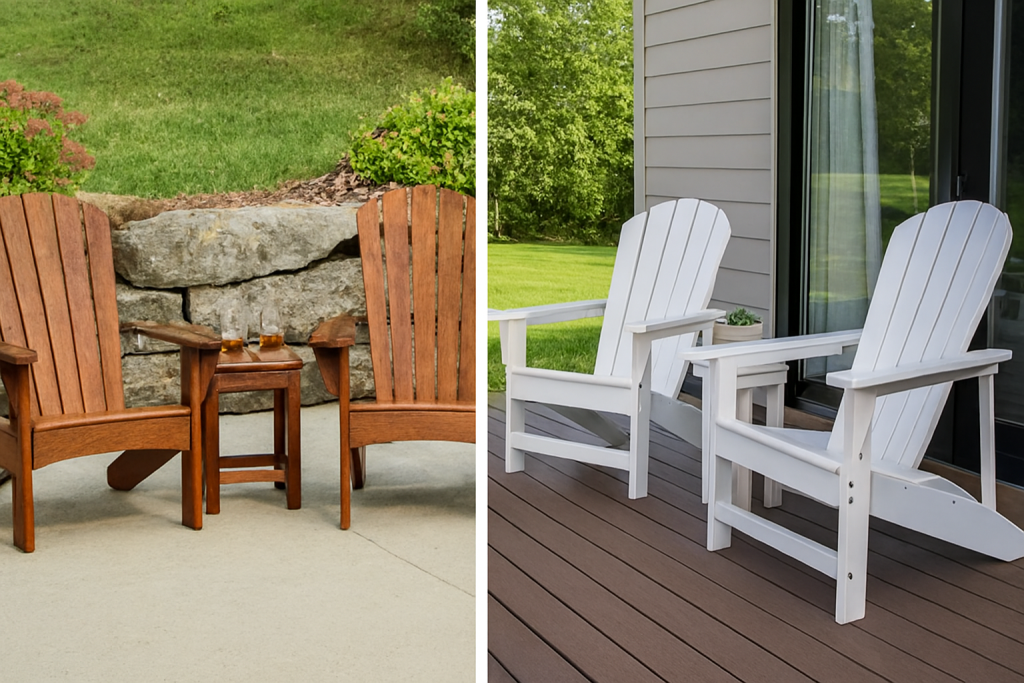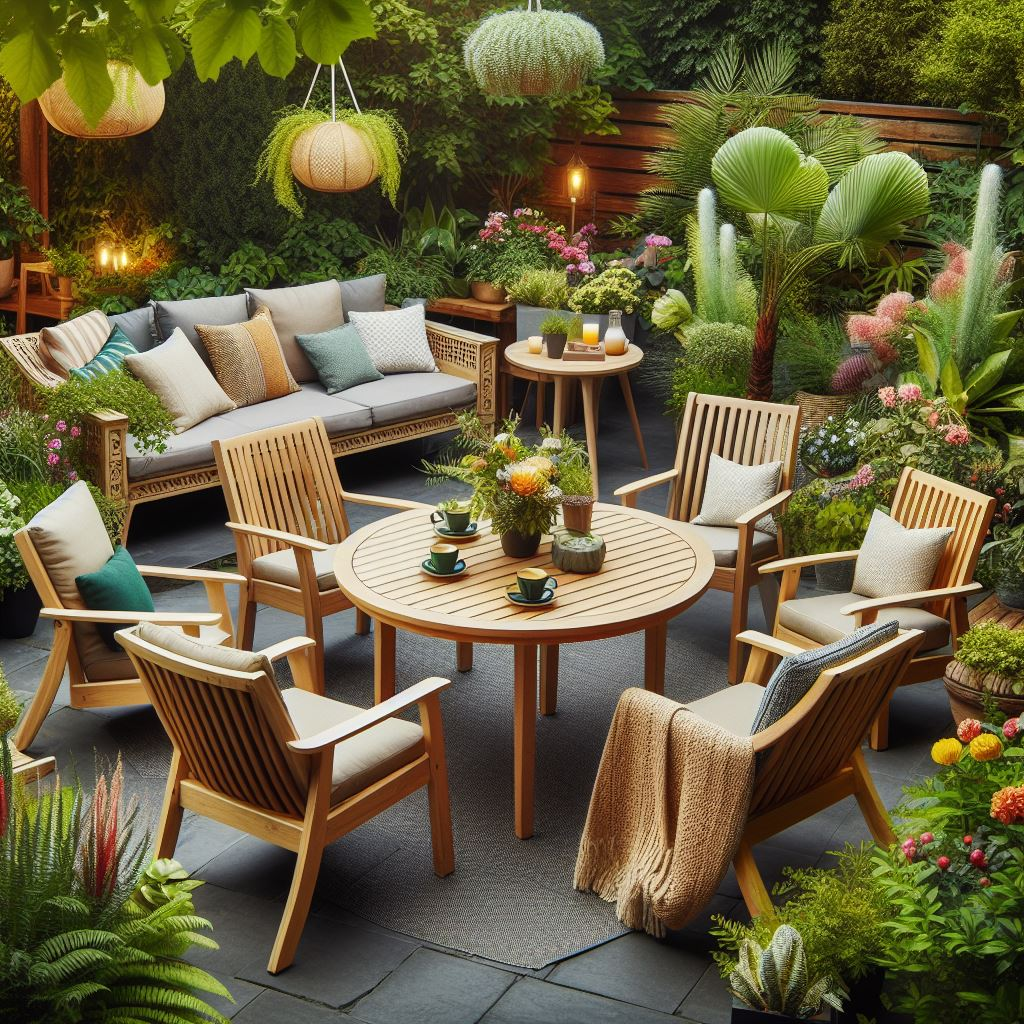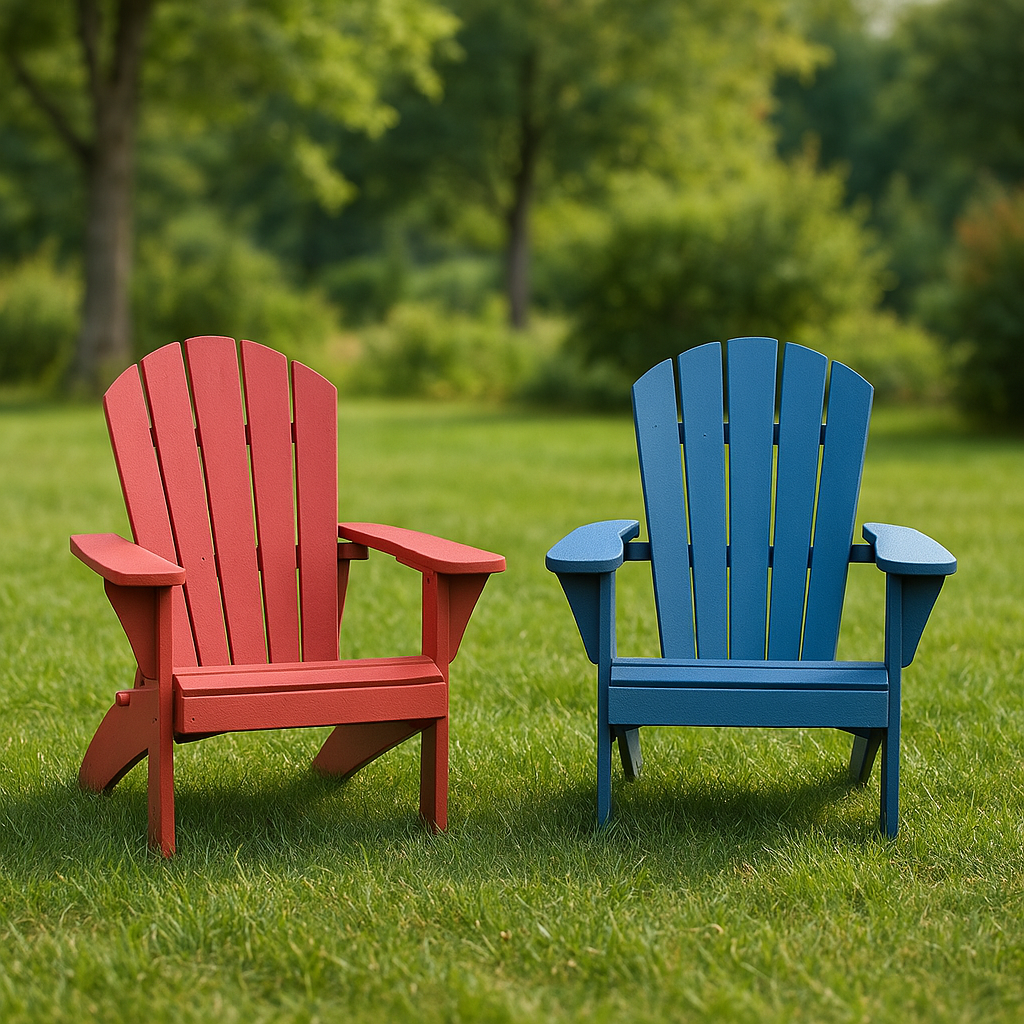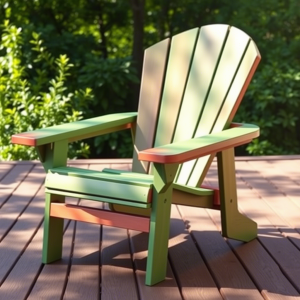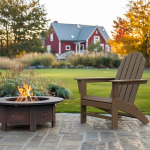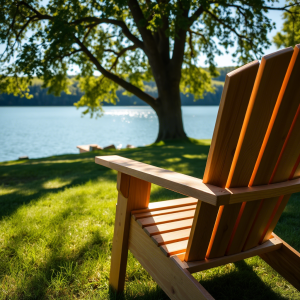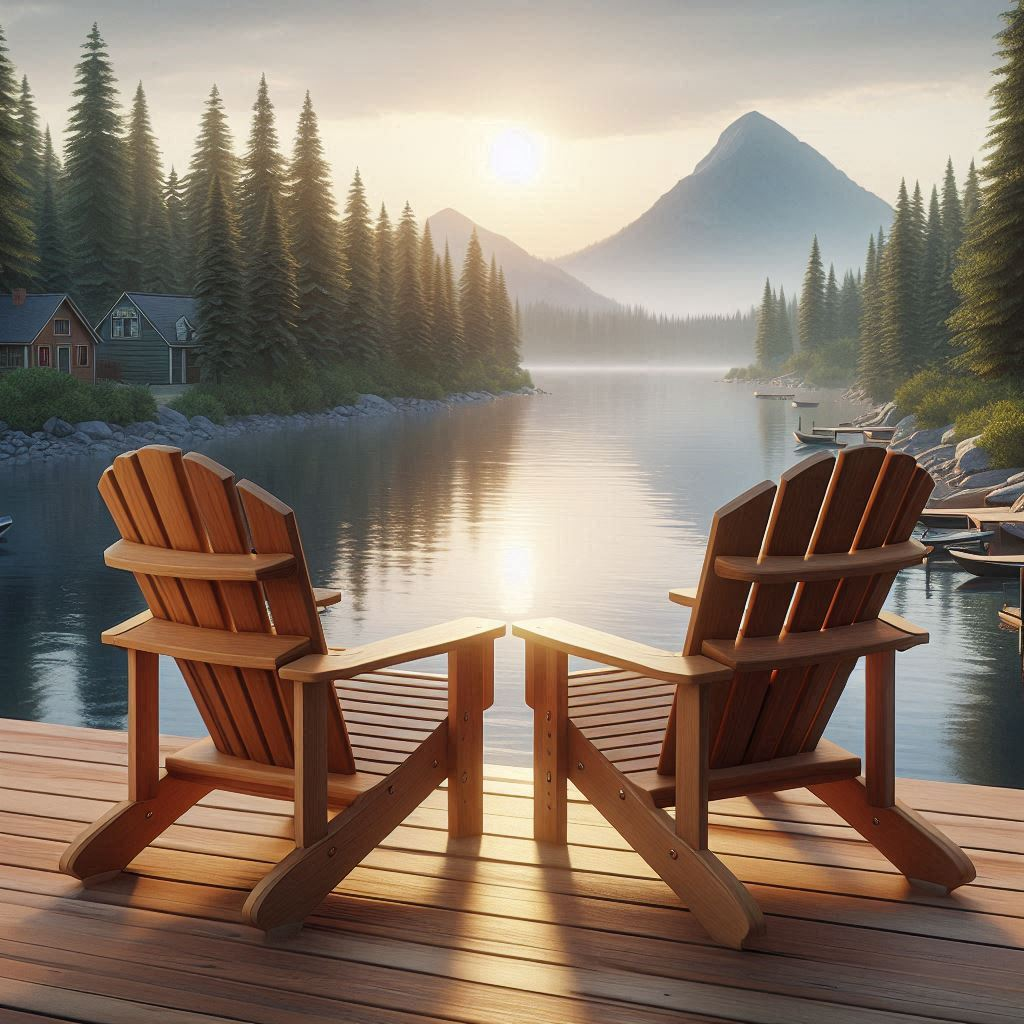Last spring, I stood in my backyard staring at three years’ worth of faded, cracked plastic chairs that I’d hauled to the curb for bulk trash pickup. I was done with cheap furniture. Done with replacing stuff every other season. Done with pretending that $99 sets from big-box stores were anything but landfill material on a two-year delay.
I had a budget of around $8,000 and a 600-square-foot deck that needed serious help. My research led me down two very different paths: Amish-made outdoor furniture and Polywood. Both promised durability. Both had loyal customers who swore they’d never buy anything else. Both cost real money.
I’m not affiliated with either company. I bought furniture from both, used it through a brutal mid-Atlantic summer and a winter that dropped below 10°F multiple times, and I’m going to walk you through exactly what I found.
What You’re Actually Comparing
Before we go further, let’s clear something up. “Amish Yard” isn’t a single brand. When people search for Amish yard furniture, they’re looking for outdoor furniture made by Amish craftspeople, typically in Pennsylvania, Ohio, or Indiana. These pieces are usually sold through local retailers, online stores like DutchCrafters or Amish Outlet Store, or direct from the workshops themselves.
Polywood, on the other hand, is a specific manufacturer based in Syracuse, Indiana. They’ve been making outdoor furniture from recycled HDPE plastic since 1990. You can buy Polywood through their website, Amazon, Wayfair, and hundreds of retailers.
This matters because comparing “Amish furniture” to “Polywood” is like comparing “Italian restaurants” to “Olive Garden.” One is a broad category with massive variation in quality, price, and style. The other is a specific company with consistent manufacturing standards.
For this comparison, I focused on Amish furniture from three well-regarded Pennsylvania workshops that specialize in outdoor pieces. I visited two in person and ordered from one online. All three use similar construction methods and materials.
The Money Question: What This Actually Costs
Let me start with the number that matters most to most people.
My Amish Furniture Costs:
- Glider bench (5-foot): $1,847
- Four dining chairs: $1,468 ($367 each)
- Dining table (44″ x 72″): $2,290
- Total: $5,605
My Polywood Costs:
- Adirondack chairs (2): $798 ($399 each)
- Side table: $249
- Rocking chair: $449
- Total: $1,496
Here’s where it gets interesting. The Amish pieces I bought were premium-grade furniture: mortise-and-tenon joinery, marine-grade hardware, multiple coats of exterior finish. The craftsman who made my dining set told me he had 40 years of experience and spent roughly 22 hours building just the table.
Polywood furniture comes off an assembly line. It’s well-made, but it’s manufactured at scale using jigs, molds, and standardized parts.
Price Breakdown Per Seating Unit:
| Furniture Type | Amish Average | Polywood Average | Price Difference |
|---|---|---|---|
| Dining chair | $367 | $200-450 | -9% to +83% |
| Adirondack chair | $425-650 | $299-449 | +42% to +45% |
| Glider/rocker | $650-950 | $449-599 | +45% to +59% |
| Bench (5ft) | $800-1,200 | $699-899 | +14% to +33% |
The overlap exists because Polywood has budget and premium lines. Their basic Adirondack starts at $299. Their “Modern” collection can hit $500+ per chair.
Material Science: What You’re Actually Sitting On
This is where things get technical, and it matters.
Amish Furniture Materials
The Amish furniture I bought is made from poly lumber, which is essentially the same HDPE plastic that Polywood uses, but sourced from different suppliers. The three workshops I dealt with all buy their poly lumber from LuxCraft or Eagle One, both major suppliers to Amish craftspeople.
One crucial point: not all poly lumber is identical. The pellets used to create HDPE boards vary in quality. Marine-grade HDPE contains UV stabilizers throughout the material, not just on the surface. Lower-grade versions use UV inhibitors only in surface coatings, which can wear off.
I asked the craftsman who built my table whether his poly lumber was marine-grade. He showed me cut samples where you could see the color went through the entire cross-section, not just surface-deep. That’s the tell. Marine-grade poly lumber has color and UV protection distributed throughout.
The hardware matters too. My Amish pieces use 316 stainless steel bolts, which contain molybdenum for extra corrosion resistance. These cost about $2-3 per bolt versus $0.40-0.60 for zinc-plated steel. On a dining chair with 14 bolts, that’s $30 in hardware versus $7.
Polywood Materials
Polywood manufactures their own lumber from post-consumer HDPE—mostly milk jugs and detergent bottles. According to their published specs, each Adirondack chair contains approximately 500 recycled milk jugs.
They extrude their own boards at their Indiana facility, which gives them quality control that custom Amish shops don’t have. Every board has consistent density, UV protection, and dimensional stability because it comes from the same production line.
Polywood uses 304 stainless steel hardware in most products, which is a step down from 316 but still highly corrosion-resistant. For the average backyard, 304 is fine. If you’re within a mile of ocean saltwater, 316 makes a difference.
Material Durability Comparison:
| Factor | Amish (using quality poly) | Polywood | Winner |
|---|---|---|---|
| UV resistance | 10-15+ years | 12-20+ years | Polywood |
| Color retention | 8-12 years | 12-15+ years | Polywood |
| Crack resistance | Excellent | Excellent | Tie |
| Hardware corrosion | 316 SS (superior) | 304 SS (excellent) | Amish |
| Consistency | Varies by workshop | Highly consistent | Polywood |
Construction Methods: Where the Differences Actually Show
This is where I saw the biggest gap.
Amish Construction
Every Amish piece I bought uses mortise-and-tenon joinery. This means each connection point has a precisely cut tendon that fits into a matching mortise hole. The joint is glued with marine epoxy, then reinforced with stainless steel bolts.
My dining chair has 18 separate mortise-and-tenon joints. Each one was cut by hand using router jigs. When I picked up the chairs, I watched the craftsman test-fit joints that didn’t quite meet his standards. He recut them.
The advantage? These joints distribute stress across a larger surface area. When you lean back in the chair, the force spreads through the mortise rather than concentrating on a single bolt.
I weigh 210 pounds. I’ve rocked aggressively in that glider bench for six months. The joints show zero movement, zero loosening, zero stress cracks around the bolt holes.
Polywood Construction
Polywood uses bolted butt joints reinforced with dowels in some high-stress areas. The arms of my Adirondack chairs are bolted directly to the sides with two bolts per connection. There’s no mortise-and-tenon joinery.
This is not necessarily worse. It’s engineered manufacturing. Polywood has calculated exactly how much force those two bolts need to handle and sized them accordingly. They use larger-diameter bolts (5/16″ versus 1/4″) to compensate for the simpler joint.
After six months, my Polywood chairs also show zero loosening, zero stress cracks. The engineering works.
The disadvantage shows up in repairability. If I somehow crack the arm of my Amish chair, I can unbolt it, have a craftsman make a new arm with matching mortises, and bolt it back on. With Polywood, I’d need to order a replacement part from the company and hope it’s still available in five years.
Construction Quality Factors:
| Element | Amish | Polywood | Notes |
|---|---|---|---|
| Joint type | Mortise-and-tenon | Bolted butt joints | Different engineering approaches |
| Time to build (chair) | 8-12 hours | 1.5-2.5 hours | Hand vs. machine |
| Consistency | ±5mm variance | ±1mm variance | Manufacturing precision |
| Repairability | High (custom parts) | Moderate (OEM parts only) | Long-term consideration |
| Weight capacity (tested) | 350-400 lbs | 400-500 lbs | Polywood publishes specs |
The Design Reality: What You Can and Can’t Get
I wanted a specific look: traditional Adirondack style with wide armrests, a dining set that could seat six comfortably, and a glider that didn’t look like it belonged at a retirement community.
Amish Customization
This is where Amish furniture shines impossibly bright.
I showed the craftsman a photo of a dining chair from Pottery Barn that I liked but wasn’t rated for outdoor use. He sketched modifications for 20 minutes, took my measurements (I’m tall, so standard chair heights feel short), and built chairs that are 2 inches taller than standard with a slightly deeper seat.
The table? I needed something that could squeeze eight people for holidays but didn’t dominate the deck the rest of the year. He suggested a butterfly leaf system that lets me collapse it from 72″ to 44″. The hardware for that system cost an extra $340 and added three days to the build time.
My glider bench is 5 feet wide because that’s the width that fit the space I had. Polywood’s glider benches come in 48″ or 60″. There is no 60″. I checked.
Color options were absurd. The workshop I used had 34 standard colors and could color-match anything I wanted for an extra $150. I brought in a paint chip from my house siding. Two weeks later, the furniture matched perfectly.
Polywood Options
Polywood has gotten better at this. When they launched in 1990, you could get white, green, or brown. Now they offer 15+ colors and multiple product lines: Classic, Modern, Traditional, Nautical, and Coastal.
But here’s the limit: you get what’s in the catalog. I wanted the traditional Adirondack chair with the Modern collection’s sleeker armrests. Can’t do it. Each design is a locked configuration.
Want to adjust seat height? Nope. Want a table that’s 50″ instead of 48″ or 60″? Nope.
The upside? I ordered my Polywood pieces on a Tuesday morning. They arrived Friday. The entire transaction took 8 minutes online. No consultations, no sketches, no waiting 6-8 weeks for a craftsman to fit me into his build schedule.
Design Flexibility Comparison:
| Aspect | Amish | Polywood |
|---|---|---|
| Custom dimensions | Yes (within reason) | No |
| Color options | 30-50+ (including custom) | 15-20 standard |
| Style modifications | Extensive | None |
| Lead time | 4-12 weeks | 3-10 days |
| Design consultation | Included | N/A |
Weather Performance: The Real Test
I live in Maryland. We get 90°F humid summers, occasional 0°F winter nights, snow, ice, and that weird spring rain that goes sideways. I left everything outside 24/7 with zero storage, zero covers, zero protection.
Summer Heat Test
Both materials handled heat identically: they got hot in direct sun.
At 3 PM on a 92°F day, I measured surface temperatures with an infrared thermometer:
- Amish chair (medium blue): 124°F
- Polywood Adirondack (weathered wood): 119°F
- Polywood rocker (white): 106°F
Dark colors absorb more heat. This is physics, not a quality issue. The white Polywood chair stayed coolest. The darker blue Amish chair got hottest. But neither material warped, softened, or showed any heat damage.
Both needed about 10 minutes in shade to cool enough to sit on comfortably. Or just throw a towel down.
Winter Cold Test
We had six nights below 15°F this past winter. One night hit 8°F.
I checked every joint, every bolt, every surface for cracks the next morning after each freeze. Nothing. HDPE plastic has a glass transition temperature around -148°F. Even extreme residential cold doesn’t approach that.
One note: my Amish dining table developed a very slight gap (maybe 1/16″) between two boards during the coldest week. It closed back up when temperatures rose. This is normal thermal contraction. The craftsman told me to expect it and not worry unless the gap exceeds 1/8″ or doesn’t close when it warms up.
My Polywood pieces showed zero gaps, zero changes. The manufacturing tolerances are tighter, so thermal contraction doesn’t create visible gaps.
Rain and Moisture
Both materials are completely waterproof. HDPE doesn’t absorb water at all.
The difference shows up in drying time and maintenance. My Amish dining table has a wood-grain texture that holds water in the grain lines. After a heavy rain, there are small puddles sitting in the textured grooves. I have to wipe it down before we can eat outside.
Polywood furniture has a smoother surface texture. Water sheets off faster. My Adirondack chairs are usually dry enough to sit on within 30-45 minutes after rain stops.
Neither material mildewed, stained, or degraded from moisture. I didn’t treat them with anything. Just left them out.
Maintenance Reality: What You’ll Actually Do
I’m going to be honest: I’m lazy about outdoor furniture maintenance. If something requires more than hosing it off once a month, I won’t do it.
Amish Furniture Maintenance
Every 18-24 months, the craftsman recommended I clean the furniture with a mild detergent and soft brush, then consider applying a UV protectant spray.
I’ve done the cleaning twice (it took 45 minutes for all pieces). I haven’t done the UV spray yet. The furniture still looks good.
Three bolts on my dining chairs loosened slightly after the first winter. I tightened them with a socket wrench. Took 10 minutes total. The craftsman said this is normal as the plastic completes its initial settling, and I shouldn’t need to do it again for years.
The textured surface on my Amish table collects pollen like crazy in spring. I have to brush it off every few days or it looks dingy. The smooth areas wipe clean easily.
Polywood Maintenance
The company says: “Just clean with soap and water. No painting, staining, or waterproofing needed.”
I’ve cleaned my Polywood pieces three times in six months. It’s genuinely that easy. Spray with a hose, wipe with a soapy rag, rinse. Done.
No bolts have loosened. No adjustments needed. Nothing.
The smooth surface doesn’t catch pollen the way textured surfaces do. A quick spray usually clears it.
Annual Maintenance Time Estimate:
| Task | Amish | Polywood |
|---|---|---|
| Cleaning (2x per year) | 90 minutes total | 45 minutes total |
| Hardware inspection | 20 minutes | 10 minutes |
| UV treatment (optional) | 30 minutes | Not needed |
| Total annual time | ~140 minutes | ~55 minutes |
Comfort: Where Your Body Actually Notices
My wife and I have very different opinions here.
The Amish dining chairs I had custom-built fit me perfectly. The extra 2 inches of height means I’m not jamming my knees up when I sit. The contoured back hits my lumbar curve right. I can sit through a two-hour meal comfortably.
My wife (5’4″) thinks they’re too tall. Her feet dangle slightly. She prefers the Polywood rocker, which has standard proportions.
The Amish glider has a deeper seat (22″ versus Polywood’s typical 20″). This is great for me. I can fully lean back. Shorter people might find it too deep.
My Polywood Adirondack chairs are comfortable in a different way. The recline angle is aggressive—about 30-35 degrees. You’re not sitting up for dinner. You’re lounging with a book or a drink. The armrests are wider and flatter, perfect for setting down a glass.
Comfort is personal, but here are measurable differences:
| Measurement | Amish (custom) | Polywood (standard) |
|---|---|---|
| Dining chair seat height | 20″ (custom) | 18″ (standard) |
| Seat depth | 22″ | 20″ |
| Back recline angle | 15° (dining) | 30-35° (Adirondack) |
| Armrest width | 4.5″ | 5.5″ |
Longevity: What These Will Look Like in 10 Years
Neither of us can time-travel, so I called people who’ve owned both types for years.
I found a woman in Lancaster who bought Amish poly furniture in 2008. She sent me photos. After 16 years outside with minimal maintenance, her chairs show:
- Slight fading on the armrests (maybe 15% lighter than original)
- One cracked bolt hole that needed a repair
- Surface texture slightly smoothed from wear
- Still completely functional and solid
I found a Polywood owner in Virginia Beach (harsh saltwater environment) who bought chairs in 2010. His photos showed:
- Moderate fading, especially on the seatbacks facing south
- No structural damage or cracks
- Hardware still solid (he’s 3 miles from the ocean)
- Still using them daily
Projected 10-Year Costs (including purchase):
| Item | Amish | Polywood |
|---|---|---|
| Initial purchase | $5,605 | $1,496 |
| Maintenance products | ~$80 | ~$30 |
| Repairs/parts | ~$100 | $0-150 |
| Replacement timeline | 15-25 years | 15-20 years |
| Cost per year | $375 | $100-112 |
The Hidden Costs Nobody Talks About
Shipping
Polywood offers free shipping on most orders over $99. Everything I ordered arrived via FedEx in flat boxes with clear assembly instructions.
Amish furniture shipping is complicated. The craftsman I worked with is 90 miles away. I drove there and loaded everything into a borrowed truck because shipping would’ve added $450-600 to the total cost. If you’re not local to Pennsylvania, Ohio, or Indiana, shipping Amish furniture gets expensive fast.
Some online Amish retailers offer “free shipping,” but they build the cost into the furniture price. Always ask what the cash-and-carry price is versus shipped price.
Assembly
My Polywood pieces required assembly. Each Adirondack chair took about 30 minutes with the included instructions and hardware. I needed a drill and a socket set. The instructions were clear, with numbered steps and diagrams.
My Amish furniture arrived fully assembled. I unloaded it and set it where I wanted it. Done.
If you’re not handy or don’t have tools, assembly matters. I’ve assembled probably 40 pieces of furniture in my life, so Polywood assembly was easy for me. My neighbor looked at the boxes and hired a handyman to assemble his Polywood set. Cost him $120.
Resale Value
I checked Facebook Marketplace, Craigslist, and local buy/sell groups.
Used Amish poly furniture holds value surprisingly well. A 5-year-old Amish glider in good condition sells for 50-60% of new price. That same glider I paid $1,847 for? I saw comparable ones listed at $900-1,100.
Polywood furniture resells at 30-40% of original price after 5 years. It’s branded and easier to find new, so the used market pays less.
What I’d Do Differently
If I were starting over with today’s knowledge:
I’d still buy Amish furniture for:
- The dining set (custom dimensions matter)
- Any piece where specific measurements matter
- Situations where I want a precise color match
- Pieces I want to keep for 20+ years
I’d buy Polywood for:
- Adirondack chairs (their design is perfect, why customize?)
- Quick purchases when I need furniture fast
- Gift furniture for relatives who don’t want assembly
- Any situation where I might move in 5-10 years
I probably wouldn’t buy again:
- The Amish glider (Polywood’s version is 90% as good for 60% of the cost)
The Real Decision Matrix
Your situation isn’t my situation. Here’s how to think through this:
Buy Amish if:
- You need custom dimensions
- You want specific design modifications
- You’re local to workshops (avoiding shipping)
- You plan to stay in your home 15+ years
- You value traditional craftsmanship
- Budget allows $300-500+ per seating unit
- You’re okay with 6-12 week lead times
Buy Polywood if:
- Standard sizes work for your space
- You want furniture delivered quickly
- You’re comfortable with assembly
- Budget is $200-400 per seating unit
- You prioritize consistency over customization
- You might move within 10 years
- You want nationally backed warranties
Don’t buy either if:
- Your budget is under $150 per piece (look at Lifetime or other brands)
- You need furniture immediately (both have lead times)
- You’re renting short-term
- You live in an apartment with no storage (both are heavy)
My Final Take
Six months in, I use my Amish dining set almost daily. We’ve had 15-person gatherings where every inch of that table got used. The custom height makes dinner parties actually comfortable for me. The butterfly leaf system works flawlessly. I don’t regret spending $3,758 on a table and four chairs.
But I probably should’ve bought Polywood Adirondacks instead of paying $650 each for custom Amish ones. The Polywood design is just better for lounging. The $399 Polywood chairs I did buy get used constantly. My wife reads in one most evenings.
The truth? Both are excellent. Both will last decades. Both beat the hell out of anything you’ll find at a big-box store for $99.
The Amish furniture wins on customization, traditional craftsmanship, and that intangible feeling of owning something made specifically for you by someone who’s been doing this for 40 years.
Polywood wins on consistency, price, availability, and not having to think about it.
I spent $8,000 total. After six months of real use, I’d spend that $8,000 again, but I’d shift maybe $1,500 from Amish to Polywood for pieces where customization doesn’t matter.
